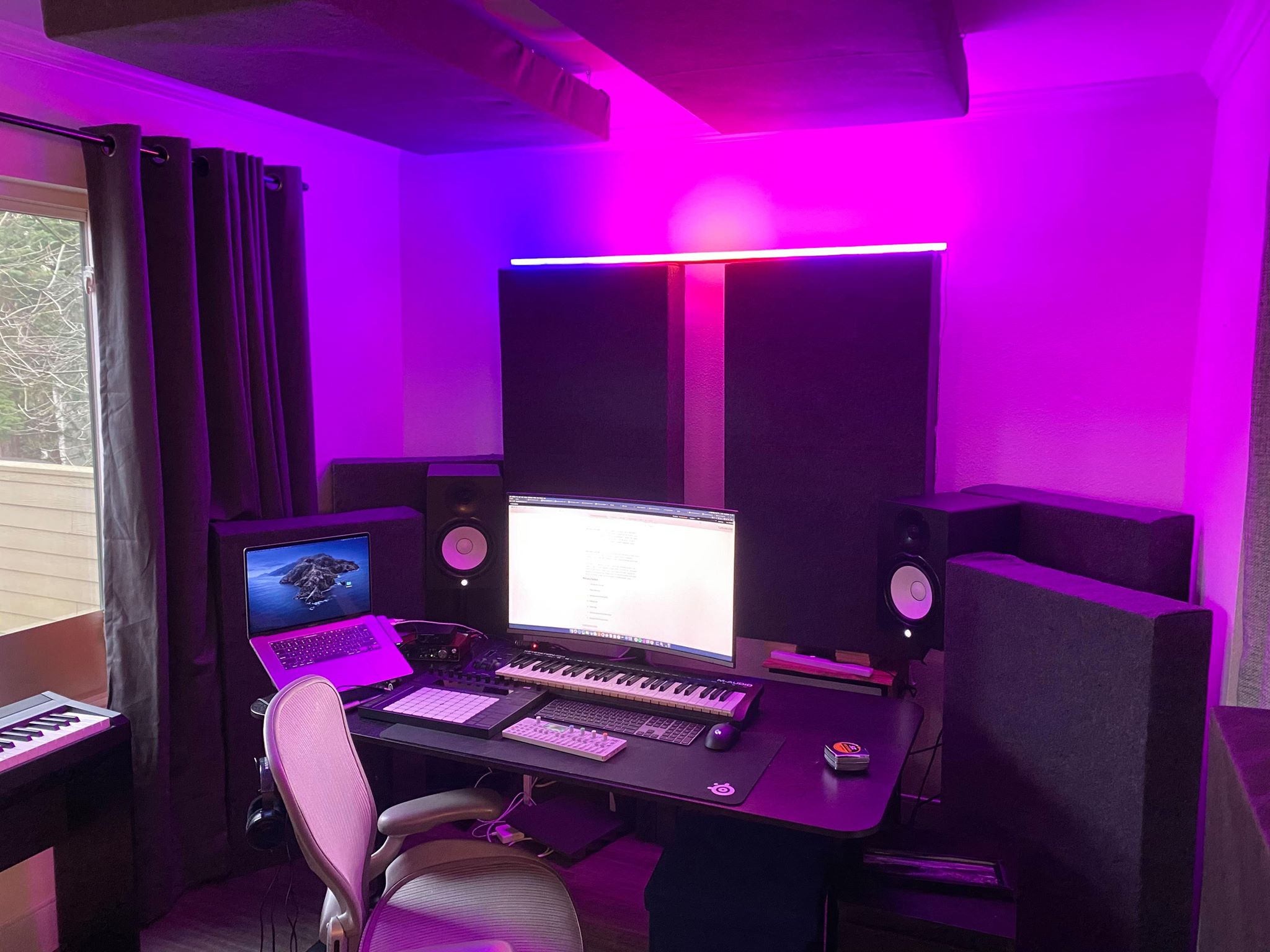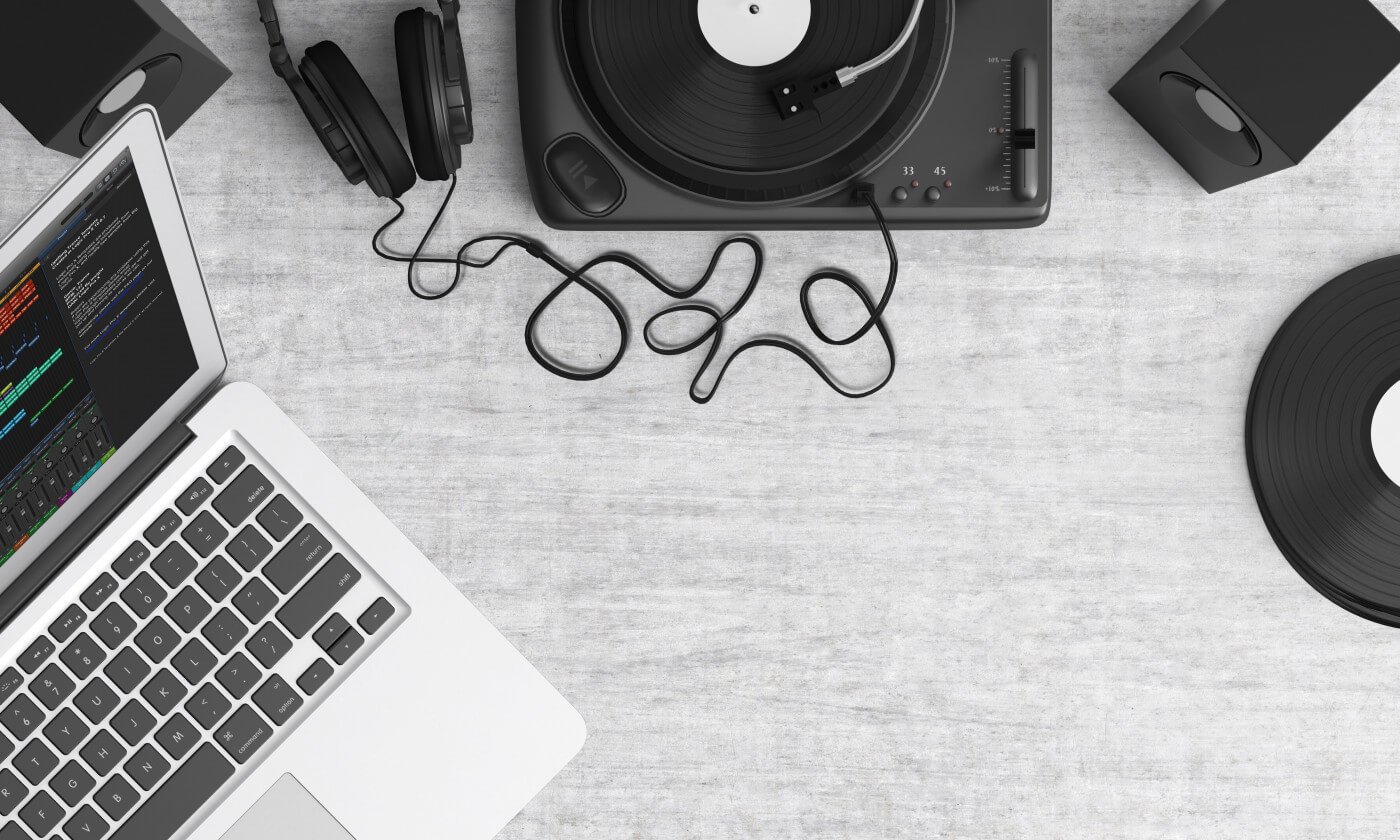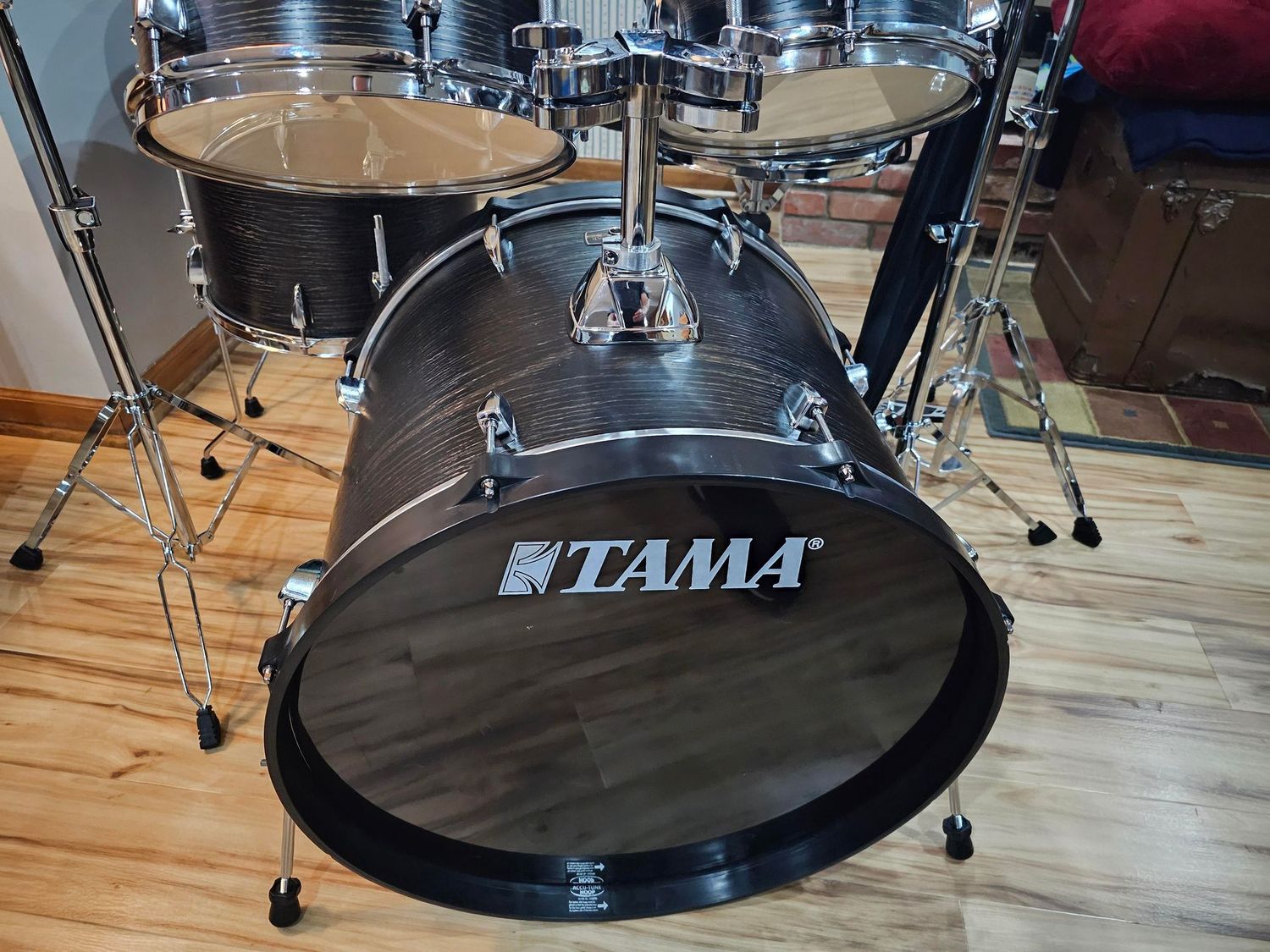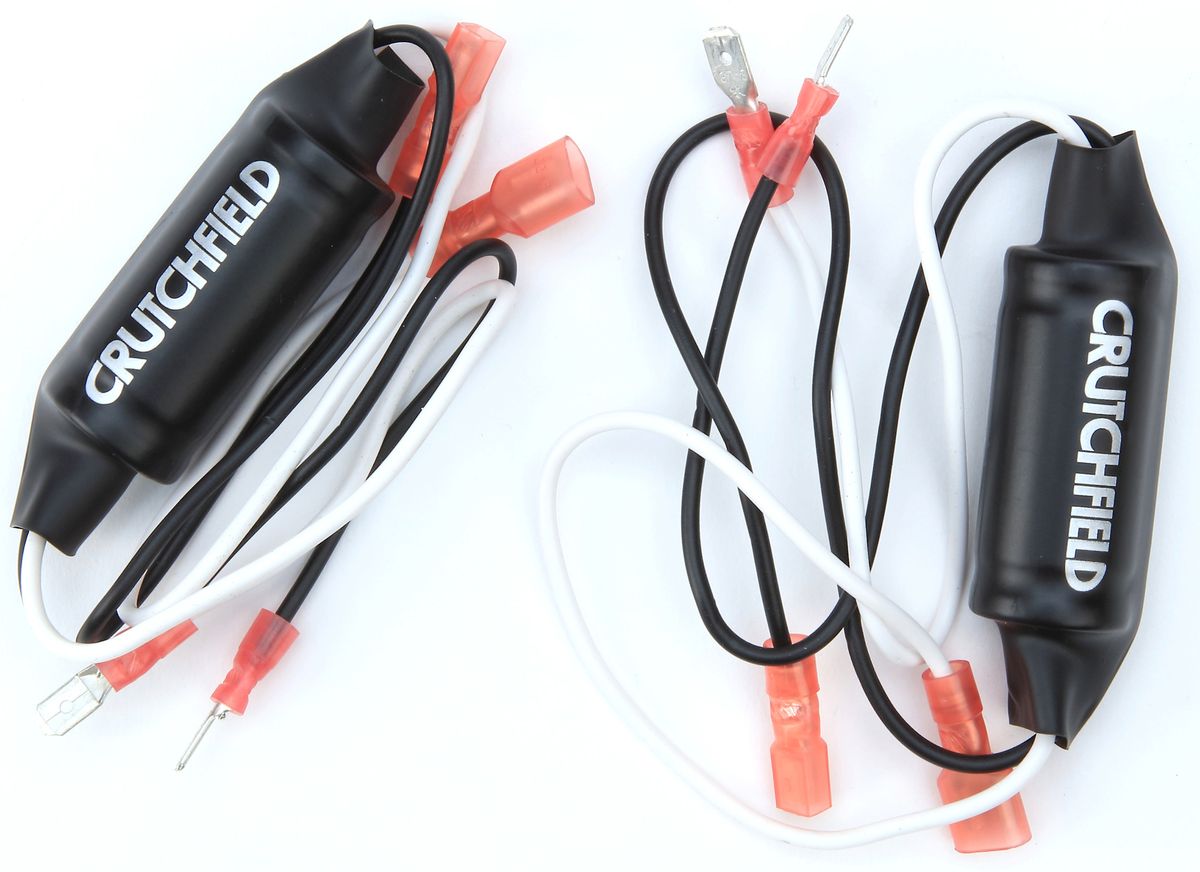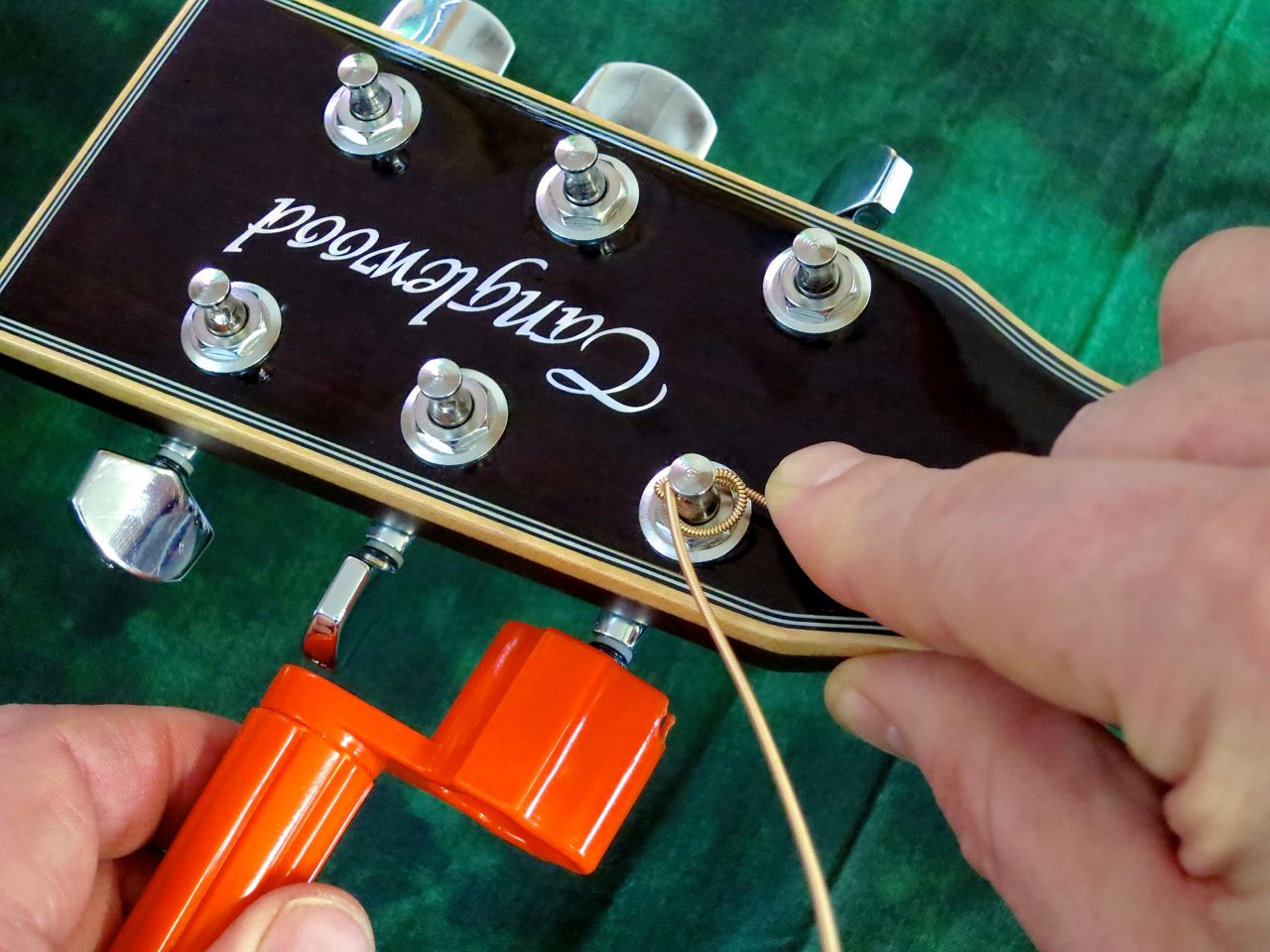Home>Instruments>Bass>How To Slap A Bass
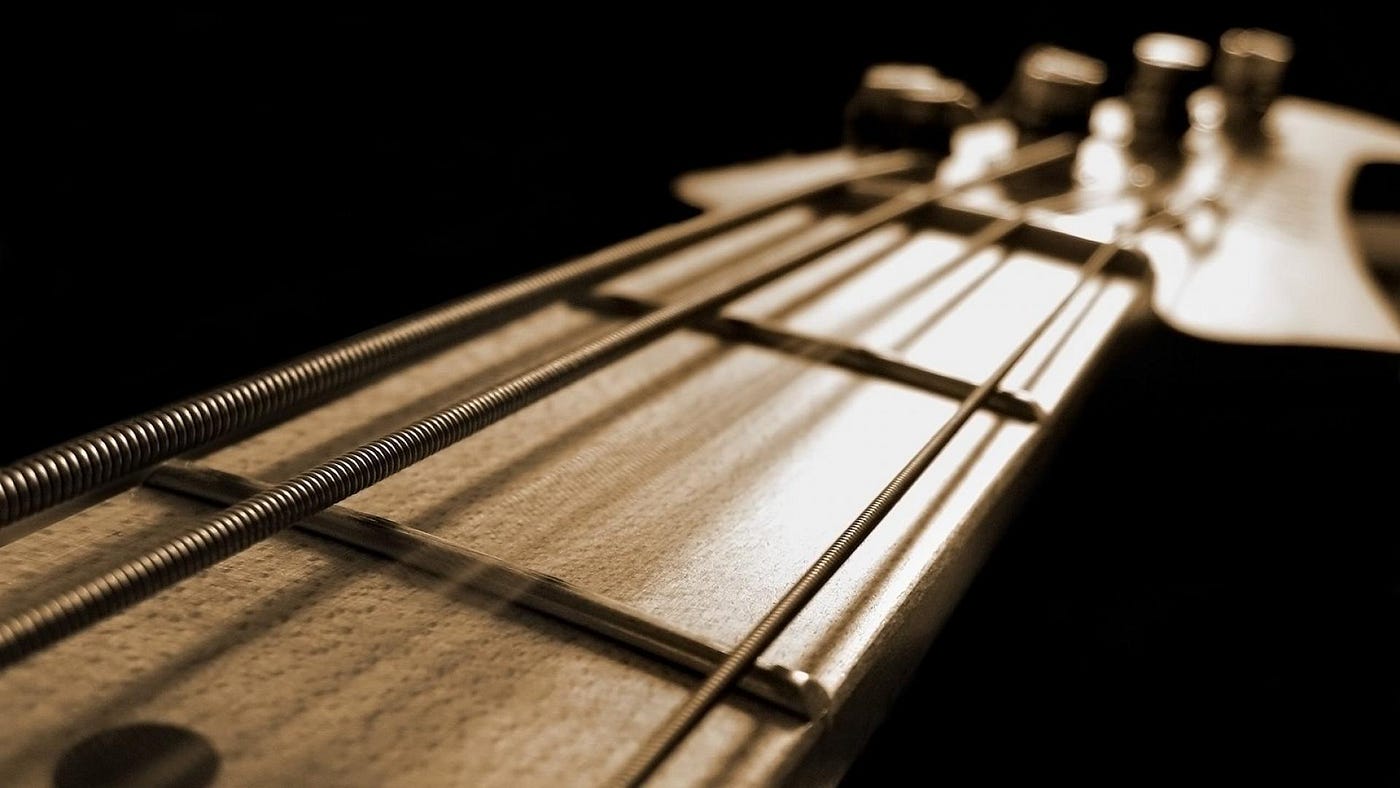

Bass
How To Slap A Bass
Modified: January 22, 2024
Learn how to slap the bass with our step-by-step guide. Enhance your bass playing skills and groove like a pro. Start now!
(Many of the links in this article redirect to a specific reviewed product. Your purchase of these products through affiliate links helps to generate commission for AudioLover.com, at no extra cost. Learn more)
Table of Contents
Introduction
Welcome to the world of bass slapping, a technique that adds a whole new dimension to your bass playing. If you’re a bassist looking to elevate your skills and add some flair to your playing style, then bass slapping is the technique for you. By incorporating slapping and popping techniques, you can create rhythmic and percussive sounds that will make your basslines stand out.
The art of bass slapping originated in the 1960s and has since become an integral part of various genres such as funk, rock, and jazz. It gained popularity with influential bassists like Larry Graham, Louis Johnson, and Flea who showcased the versatility and power of the technique.
Before diving into the world of bass slapping, it’s essential to understand the fundamentals and techniques involved. In this article, we will explore the proper hand positioning, thumb slapping technique, hammer-ons and pull-offs, using percussive slaps, incorporating ghost notes, adding harmonics, and developing speed and accuracy. Moreover, we will also discuss common mistakes to avoid, ensuring that you get off on the right track.
Whether you’re a beginner or an experienced bassist, mastering the art of bass slapping can open up new avenues of creativity and expression in your playing. So, grab your bass, get ready to dig in, and let’s dive into the world of bass slapping!
Understanding Bass Slapping
Bass slapping is a technique commonly used in various genres, including funk, rock, and jazz. It involves using your thumb to strike the strings against the fingerboard, creating a distinct percussive sound. When executed correctly, bass slapping can add groove, rhythm, and complexity to your basslines.
One of the keys to understanding bass slapping is to recognize the importance of the two main components: the slap and the pop. The slap is the initial strike on the string using the bony part of your thumb, while the pop is the pull and release of the string using your other fingers, typically your index or middle finger.
When slapping, it’s crucial to maintain a relaxed hand and wrist position. Start by positioning your thumb parallel to the strings, lightly touching the string with the bony part of your thumb. Avoid using excessive force when striking the string, as it can result in a harsh and unpleasant sound. Instead, focus on developing a controlled and balanced strike.
Furthermore, it’s essential to understand the role of muting when slapping. By using both your palm and the fingers of your slapping hand, you can control the sustain and prevent unwanted string vibrations. The palm can rest on the strings near the bridge, muting the lower strings, while the fingers can lightly touch the strings above the one you’re slapping, muting the higher strings.
As you become more comfortable with the basics of bass slapping, you can experiment with varying the intensity and angle of your slaps to achieve different tonal qualities. Additionally, incorporating techniques such as hammer-ons, pull-offs, percussive slaps, ghost notes, and harmonics can further enhance your bass slapping repertoire.
Bass slapping is an expressive and dynamic technique that allows bassists to add a unique flavor to their playing. By understanding the fundamentals and practicing diligently, you can unlock the full potential of bass slapping and take your bass playing to new heights.
Proper Hand Positioning
When it comes to bass slapping, proper hand positioning is crucial for achieving accurate and controlled strikes on the strings. Adopting the correct hand position will ensure that you can execute slaps and pops with ease and precision. Here are some key tips to keep in mind:
- Start by positioning your thumb parallel to the strings, slightly hovering above them. Your thumb should be in line with the string you intend to slap.
- Place your other fingers, typically your index and middle finger, either on the pickup or on the strings above the one you’re slapping. This technique, known as muting, helps control unwanted string vibrations and ensures a cleaner sound.
- Maintain a relaxed and loose grip on the bass neck. Tension in your hand and fingers can hinder your ability to execute slaps and pops smoothly.
- Keep your wrist straight, avoiding any excessive bending or awkward angles. This allows for better control and reduces the risk of strain or injury.
- Ensure that your hand is positioned over the appropriate strings for the desired slap or pop. For example, if you want to slap the E string, position your hand over that specific string.
Remember, finding the optimal hand positioning may require some experimentation and adjustment based on your hand size, bass size, and personal preference. Take the time to find a position that feels comfortable and allows for efficient execution of slaps and pops.
It’s also worth noting that hand positioning can vary depending on the style of bass slapping you’re aiming for. For example, some bassists prefer a more anchored hand position, resting their thumb on the pickup or string, while others opt for a floating thumb technique, allowing for greater flexibility and movement.
Ultimately, the goal of proper hand positioning is to promote accuracy, control, and a relaxed playing experience. By mastering the fundamentals of hand placement, you’ll be well on your way to becoming a proficient bass slapper.
Thumb Slapping Technique
The thumb slapping technique is the foundation of bass slapping. It involves using the bony part of your thumb to strike the string, creating a sharp and percussive sound. Mastering this technique is essential for developing a strong and vibrant bass slap groove. Here are some key tips to help you improve your thumb slapping technique:
- Start by positioning your thumb parallel to the string you want to slap, hovering above it. Avoid bending your thumb too much, as it can hinder your ability to generate power and accuracy.
- Using a relaxed and controlled motion, strike the string with a quick and decisive flick of your thumb. Aim to hit the string on its lower half, as this produces a fuller and more resonant sound.
- Focus on generating power from your wrist and forearm, rather than relying solely on finger strength. Flicking your wrist forward while striking the string can add extra force and impact to your slaps.
- After the initial strike, allow your thumb to bounce off the string, creating a natural rebound. This technique, known as thumb slapping or thumb popping, contributes to the percussive nature of the sound.
- For consistent and even slaps, practice maintaining a consistent distance from the string. This will ensure that the strength and angle of your strikes remain consistent, resulting in a more controlled and balanced sound.
Remember to start with slow and deliberate movements, gradually increasing speed as you become more comfortable. It’s important to maintain precision and clarity in your slaps rather than sacrificing accuracy for speed.
Experiment with different levels of thumb pressure to achieve variations in dynamics and tones. Applying more pressure will result in a heavier and louder slap, while using less pressure can create a softer and subtler sound.
As with any technique, consistent practice is key to mastering thumb slapping. Spend dedicated time each day focusing on your thumb slapping technique, gradually incorporating it into your basslines and improvisations. With patience and persistence, you’ll develop the control and finesse necessary to create captivating bass slaps.
Hammer-Ons and Pull-Offs
Hammer-ons and pull-offs are techniques that add fluidity and expressiveness to bass slapping. They involve using your fretting hand to create melodic and seamless transitions between notes, without the need to pluck or pick each individual note. Mastering these techniques will allow you to create fast and intricate basslines with ease. Here’s how to incorporate hammer-ons and pull-offs into your bass slapping repertoire:
- Start by playing a note on the fretboard using your plucking hand. This will be your initial note.
- To execute a hammer-on, use your fretting hand to tap a higher note on the same string, without plucking or picking again. The key is to apply enough force with your finger to make the higher note sound clearly and audibly.
- For pull-offs, begin with a note played on the fretboard and then use your fretting hand to quickly “pull off” to a lower note on the same string, creating a smooth transition. To do this, release the pressure on the string while simultaneously pulling it off the fretboard.
- Ensure that there is a clear and audible separation between the initial note and the hammered-on or pulled-off note. This will help maintain clarity and definition in your basslines.
- Practice incorporating hammer-ons and pull-offs into different bassline patterns and phrases. Start by practicing simple sequences and gradually increase the complexity as your skills develop.
When executing hammer-ons and pull-offs, it’s important to maintain a light touch and relaxed hand position. Avoid using excessive force or tension, as this can hinder the fluidity of the technique. Instead, focus on precise finger movements and try to achieve a smooth and seamless transition between notes.
Combining hammer-ons, pull-offs, and thumb slapping can create a dynamic and engaging bassline. Experiment with different combinations and rhythms to add depth and complexity to your playing.
As with any technique, consistent practice is key to mastering hammer-ons and pull-offs. Dedicate regular practice time to incorporate these techniques into your playing and gradually increase speed and accuracy. With time and effort, you’ll be able to effortlessly incorporate hammer-ons and pull-offs into your bass slapping repertoire.
Using Percussive Slaps
Percussive slaps are a versatile and captivating technique that can bring a rhythmic and percussive element to your bass playing. By incorporating percussive slaps, you can create a wide range of sounds that mimic drum patterns and add a unique flavor to your basslines. Here’s how to effectively use percussive slaps in your playing:
- Start by mastering the basic thumb slap technique as a foundation. This will provide the main percussive element in your slaps.
- Experiment with different striking positions on the strings to produce various percussive sounds. Striking closer to the bridge will yield a brighter and more metallic tone, while hitting closer to the neck will result in a warmer and rounder sound.
- Incorporate muted percussive slaps by lightly resting your palm on the strings near the bridge. This technique adds a muted and percussive quality to your slaps, similar to a snare drum sound.
- Combine your percussive slaps with rhythmic patterns and beats to create dynamic basslines. Think of the percussive slaps as the backbone of the rhythm section, providing a solid and driving pulse.
- Experiment with different rhythmic subdivisions, such as eighth notes, sixteenth notes, and triplets, to create varied and interesting percussive patterns. This will add complexity and depth to your basslines.
When using percussive slaps, it’s important to maintain a consistent and controlled striking motion. Focus on generating a clean and defined percussive sound by striking the strings with precision and accuracy.
Additionally, incorporating accents and accents within your percussive slaps can add further dynamics and contrasts to your basslines. By emphasizing certain notes or slaps, you can create a more impactful and expressive performance.
As with any technique, practice is essential in developing the skill and control required for effective use of percussive slaps. Spend dedicated time to explore different rhythms and patterns, gradually incorporating them into your playing. With time and practice, you’ll be able to incorporate percussive slaps seamlessly and enhance the overall rhythmic quality of your bass playing.
Adding Ghost Notes
Ghost notes are subtle and muted notes that add texture and groove to your basslines. They are called “ghost” notes because they are played softly and almost inaudibly, blending seamlessly with the surrounding notes. Adding ghost notes to your bass slapping technique can bring an extra layer of complexity and rhythm to your playing. Here’s how to incorporate ghost notes into your basslines:
- Start by muting the strings with your fretting hand using a light touch. This technique helps create the muted sound characteristic of ghost notes.
- Focus on striking the muted strings with your thumb or fingers, while keeping the force and volume of the note significantly lower than the other played notes. This will create a subtle percussive sound.
- Experiment with different placements and combinations of ghost notes within your basslines. These could be placed in between played notes, on the offbeat, or even in syncopated patterns.
- Use ghost notes to syncopate your basslines and create a syncopated or funky groove. These subtle accents on the weaker beats can add a unique rhythmic feel to your playing.
- Gradually increase the complexity and placement of ghost notes as you become more comfortable. This will add more variation and interest to your basslines.
It’s important to note that ghost notes should be played softly, almost inaudibly, and should not disrupt the overall groove of the bassline. They should enhance the rhythm and add depth, without overpowering the other notes being played.
As with any technique, practice is key to mastering ghost notes. Spend dedicated time working on your control and precision in executing ghost notes, paying attention to the subtlety of the sound. With practice, you’ll be able to seamlessly incorporate ghost notes into your basslines, adding a captivating rhythmic element to your playing.
Incorporating Harmonics
Harmonics are an exciting and unique technique that can elevate your bass slapping to a new level. By incorporating harmonics, you can create shimmering, bell-like tones that add a touch of magic to your basslines. Here’s how to effectively incorporate harmonics into your playing:
- Start by understanding the concept of harmonics. Harmonics are created by lightly touching the string at certain nodal points, rather than pressing it down onto the fretboard. These nodal points divide the string into smaller vibrating segments.
- Experiment with different harmonic techniques, such as natural harmonics and artificial harmonics. Natural harmonics are played by lightly touching the string at specific nodal points, while artificial harmonics involve combining a note played by your plucking hand with a harmonic played by your fretting hand.
- Practice finding the nodal points for natural harmonics on your bass strings. These points are typically found at the 12th, 7th, and 5th frets, as well as above the 19th fret on the higher strings. Lightly touch the string with your finger without pressing it down and pluck the string to produce the harmonic.
- Experiment with different techniques for producing artificial harmonics, such as using your thumb to play a note and using your index finger or another finger to lightly touch the string at the desired nodal point.
- Explore using harmonics in different contexts within your basslines. You can use harmonics to add embellishments and accents to specific notes, or even create melodic harmonics that stand out in a solo or improvisation.
When incorporating harmonics, it’s important to maintain a light touch and use precise finger placement. The actual contact with the string should be minimal to allow the harmonic to ring out clearly.
As with any technique, practice is essential in developing your control and accuracy in producing harmonics. Spend dedicated time exploring different harmonic techniques and discovering the unique sounds they can bring to your basslines. With time and practice, you’ll be able to incorporate harmonics seamlessly and add a touch of brilliance to your playing.
Developing Speed and Accuracy
Developing speed and accuracy in your bass slapping technique is essential for executing complex and fast-paced basslines with precision. Building these skills will allow you to play with fluidity, groove, and clarity. Here are some tips to help you enhance your speed and accuracy:
- Start with slow and controlled practice. Focus on perfecting the technique at a comfortable tempo before gradually increasing the speed. Speed will come with time and practice, so it’s important to build a solid foundation first.
- Practice with a metronome or backing track to develop your sense of timing and to ensure that you’re playing in time. Start at a slower tempo, and gradually increase it as you get more comfortable. This will help you maintain accuracy and control as you push your speed limits.
- Isolate difficult passages or techniques and practice them separately. Break down complex patterns into smaller parts and work on them gradually. Once you’ve mastered each segment, gradually incorporate them back into the whole piece.
- Frequently alternate between slow, deliberate practice and faster, more challenging tempos. This will help train your muscle memory and build speed gradually without sacrificing accuracy. It also helps avoid developing bad habits or sloppy technique.
- Focus on maintaining a relaxed and loose grip on the bass, both with your plucking and fretting hand. Tension can hinder your speed and accuracy. Concentrate on efficient finger and hand movements to minimize wasted energy.
- Utilize a variety of exercises and drills to target specific techniques and improve dexterity. This can include scales, arpeggios, finger exercises, and rhythmic patterns. Aim for consistency and evenness in your playing as you increase speed.
- Regularly challenge yourself with new and technically demanding basslines or songs. Pushing your boundaries will help you progress and continue to improve your speed and accuracy.
- Record yourself while practicing to identify areas that need improvement. Focus on specific sections or techniques that are challenging and keep working on them until they become more fluid and precise.
Remember, developing speed and accuracy takes time and consistent practice. Don’t get discouraged if progress feels slow at times. Stay dedicated, maintain patience, and celebrate each milestone along the way.
By implementing these strategies and investing time in intentional practice, you’ll gradually build the speed and accuracy needed to perform intricate and impressive basslines with confidence.
Common Mistakes to Avoid
When learning and mastering bass slapping, it’s important to be aware of common mistakes that can hinder your progress and affect the quality of your playing. By being conscious of these pitfalls and actively working to avoid them, you can enhance your technique and make significant improvements. Here are some common mistakes to watch out for:
- Using excessive force: One of the most common mistakes is using too much force when slapping or popping the strings. Remember that a controlled and balanced strike produces a better sound. Focus on precision and accuracy rather than relying solely on power.
- Poor hand positioning: Incorrect hand positioning can limit your technique and hinder your ability to execute slaps, pops, and other techniques effectively. Continually check your hand positioning and adjust as needed to maintain a relaxed and optimal playing position.
- Lack of muting: Failing to mute the strings can result in unwanted string noise and a muddier sound. Use both your palm and the fingers of your plucking hand to mute unplayed strings and control sustain, ensuring cleaner and more focused basslines.
- Inconsistent rhythm and timing: Maintaining a solid sense of rhythm is crucial in bass slapping. It’s essential to stay disciplined and practice with a metronome or backing tracks to develop a strong sense of timing and groove. Work on playing precisely on the beat and avoiding unintentional pauses or rushed notes.
- Neglecting dynamics: Dynamics are crucial in creating an engaging and expressive bassline. Avoid playing with a flat and uniform sound. Instead, focus on incorporating variations in volume and articulation to add depth and emotion to your playing.
- Ignoring technique development: It’s tempting to skip over technical exercises and focus solely on learning songs or playing favorite basslines. However, neglecting technique development can limit your progress and hinder your ability to execute more advanced techniques. Dedicate time to exercises and drills specifically designed to strengthen your technique.
- Overlooking the role of the non-slapping hand: The hand that is not performing the slapping technique is just as important. Neglecting proper fretting hand technique can result in inaccurate notes, buzzing strings, and limited control. Practice maintaining proper finger placement, finger strength, and precise fretting to ensure clean and accurate notes.
- Lack of patience and persistence: Developing skill in bass slapping takes time and dedication. It’s easy to become frustrated or discouraged if progress feels slow. Remember to be patient with yourself and celebrate small victories along the way. Consistent practice and a positive mindset will yield better results over time.
By being aware of these common mistakes and actively avoiding them, you’ll be able to enhance your technique, improve the quality of your sound, and progress more effectively in your bass slapping journey.
Conclusion
Congratulations on delving into the world of bass slapping! By mastering this technique, you have unlocked a whole new realm of creativity and expression on the bass. Throughout this article, we have explored the fundamentals of bass slapping, including hand positioning, thumb slapping, hammer-ons and pull-offs, percussive slaps, ghost notes, harmonics, speed and accuracy, and common mistakes to avoid.
Remember, learning bass slapping takes time, dedication, and consistent practice. Start by mastering the basics, such as hand positioning and thumb slapping, before exploring more advanced techniques like incorporating ghost notes or harmonics. Be patient with yourself and enjoy the journey of discovering new sounds and expanding your musicality.
As you continue to develop your bass slapping skills, challenge yourself to apply the techniques creatively in different musical contexts. Experiment with various genres and styles, and don’t be afraid to put your own unique spin on the technique. Let your personality shine through your playing.
Finally, seek inspiration from bassists who have mastered the art of bass slapping. Listen to legends like Larry Graham, Louis Johnson, and Flea, and study their techniques and approaches. But remember, while it’s important to learn from others, strive to develop your own style and voice on the bass.
So, pick up your bass, embrace the groove, and let your fingers create magic on the strings. With commitment, practice, and a passion for the instrument, you’ll continue to grow and evolve as a bassist. Happy slapping!

